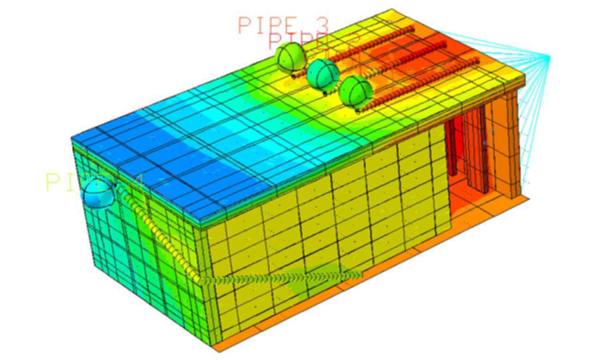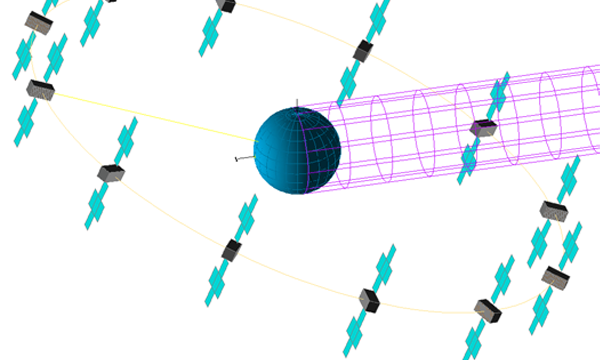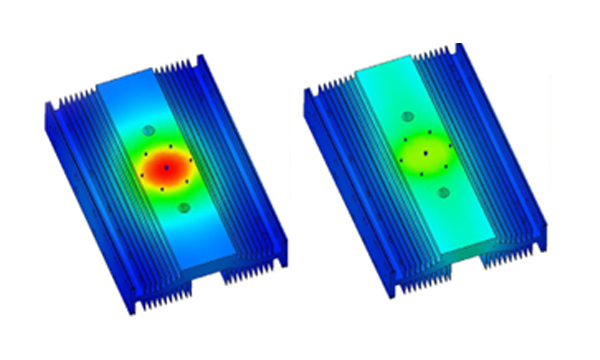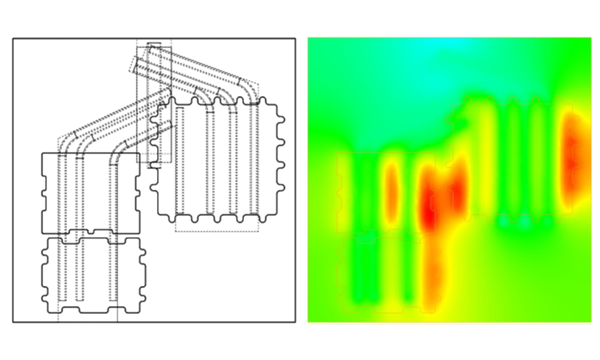- Research & Development
- Product Development
- Manufacturing
- Lifecycle Management
- Space Thermal Structural & Analysis
Discover ACT, where we redefine spacecraft design by seamlessly integrating thermal and structural elements to deliver optimal solutions. Renowned for our expertise in thermal control systems, we’ve extended our mastery to spacecraft structures, meeting diverse customer demands with precision. From innovative honeycomb panels to robust structures, we craft spacecraft backbone with meticulous verification. At ACT, we offer turnkey spacecraft systems you can trust.
A holistic approach to spacecraft thermal and structural design can reduce complexity and cost while creating a more optimal solution than an isolated approach to design. At ACT, we pride ourselves in providing the best approach for our customer, which typically involves trade between thermal and structural design components. As a company renowned for our immense depth of knowledge of thermal control systems, we have also developed a cornerstone of the knowledge base is spacecraft structures due to the blend of customer requirements. From honeycomb panels to physical structures, and advanced thermal technologies that comprise the skeleton and arteries of a spacecraft, ACT has needed to design and verify both thermal and structural elements in system level spacecraft design. ACT is a one-stop-shop for turnkey spacecraft systems you can rely upon.
In building our suite of capabilities, our focus has been in several core areas:
- Thermal Design and Analysis
- Structural Analysis
- Designing for Manufacturability
- Programmatic / System Level Trades
By having a full range of capabilities in these areas, ACT can provide optimized Size, Weight and Power (SWaP), appropriate technology down selection, and designs conducive to program schedules and cost constraints.
Thermal Design & Analysis
Advanced Control Technologies (ACT) stands as a trusted partner, leveraging over two decades of expertise to offer comprehensive solutions in spacecraft structures and advanced thermal technologies for precise and reliable space missions. ACT’s analytical experience has been a trusted asset for space vehicles to Survive Lunar Night, explore other planets, and carry out scientific missions throughout our solar system.
Capabilities
- Thermal Simulations
- Radiator Sizing
- Component Selection & Verification
- Pressure Analysis
- Thermal Control and Survival Heater Assessments
- Steady State & Transient Analysis
- Orbital & Environmental Analysis
Tools
- Thermal Desktop
- ANSYS
- AutoCFD
- Solidworks Simulation
- In-House Code*
- Heat Pipes (CCHPs, LHPs, SCWHP, PHP, VCHP)
- Phase Change Material (PCM)
- Liquid Cooling (P2P, Accumulators)
*In-house code is a critical part of spacecraft design, specifically during product implementation phase. Using in-house code to analyze the produce performance, ACT can drastically reduce complexity that feeds into the higher-level thermal model.
Structural Analysis
While the operational profile of each spacecraft can differ tremendously, they all have one thing in common: survival of launch loads, one of the most torturous environments a system experiences. In addition, spacecrafts and their components may be subjected to vibration from ground and maritime transportation, shock from payload deployment, depressurization, pressure cycling, thermo-elastic cycling, and more. It is critical to analyze these structural environments and requirements to ensure systems will function properly after launch. ACT is well versed in completing full analytical verification matrix of critical requirements using a variety of tools.
Capabilities
- Static & Dynamic Assessments
- Shock, Vibration Analysis
- Mechanical Design for Launch Conditions
- Pressure Containment
- Thermo-elastic cycling
- Fracture Analysis
- Yield & Fatigue
- Thermal Expansion
Tools
- ANSYS
- NASGRO (fracture analysis)
- In-house code
Designing for Manufacturability
Converting a system from a “design” to “ready to be produced” state can be challenging, especially when dealing with systems and materials that are unfamiliar to you. Decisions made during design for manufacturability state will affect prior analyses and resultant product reliability if not well understood. Over constraining your design and putting tighter-than-required controls (tolerances, etc.) can be to the detriment of cost and lead time to have it produced. ACT has converted many designs from concept to actuality in a manner that is robust and repeatable while retaining competitive cost and lead time performance. With this comes significant experience with, and understanding of, materials and tolerances used to produce spaceflight structures:
- “COTS” Spool or Custom Insert Options
- Tolerancing for embedded stiffeners or enhanced thermal technologies (CCHPs, LHP condensers, etc.)
- Coating/primer/adhesive options
- Material selections
- OSRs and Emissive Paints/Tapes – Options and utilization
- Iso-Grid or Honeycomb Panels
- Connections/Joining: Bi-Metallic Welding, valving, brazing, etc.
Programmatic / System Level Trades
In parallel with any pure analysis is the system level considerations. In many cases this is done at the prime contractor level; however, ACT is often asked to play a role from the structures and thermal architecture level.
Capabilities
- System Architecture Design
- Safety Analysis
- Component & Sub-System FMEA
- Cost & Lead Time Analysis
- Material Handling and Logistics
Tools
- ANSYS
- In-house data libraries (generated and external source compiled)
FAQs
With proper execution of the elements above, ACT routinely answers the following questions during the design phase:
- What technologies are available for my application? Which is the best fit for what I’m trying to do, and how do I model its performance accurately?
- How can I best thread-the-needle of heat dissipation capability vs. survival heater budget for my system? What cases are bounding (hot and cold) for my application, and what are the consequences of beginning-of-life and end-of-life on my predictions and material selections?
- What constraints on ground testing do my thermal control system selections impose? Are there specific provisions or limitations to be aware of and design controls/mitigations for?
- What type of panel (machined or honeycomb) should I use, and how should it be assembled with adjacent systems to best optimize SWaP, cost, and lead time?
- What’s the best way to model my system in orbit? When should I evaluate steady state vs. transient performance? How would this change for planetary operation?







